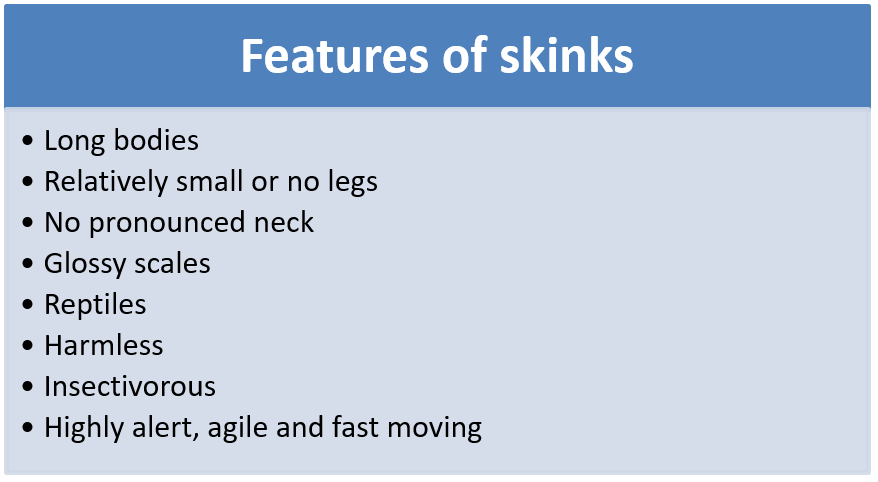Daily Current Affairs and GK | 20 October 2020

Main Headlines:
- 1. Ayushman Sahakar scheme launched by Union Agriculture Minister.
- 2. Heeng cultivation starts in India for the first time.
- 3. Slow progress of Ghar Tak Fibre scheme.
- 4. Zoological Survey of India (ZSI) publishes Skinks of India.
- 5. World Statistics Day: 20 October
- 6. National Solidarity Day: 20 October
- 7. Working group constituted by IRDAI to evolve standard Cyber Liability Insurance product.
- 8. PLFS shows a decline in unemployment rate in urban areas.
- 9. India’s First Seaplane Project and its function.
- 10. Quad navies ready to sail together and Indo-US ready for a pact.
- 11. Bhanu Kapil shortlisted for TS Eliot Prize.
Happy December get 35% Off
Use Coupon code DEC25
1. Ayushman Sahakar scheme launched by Union Agriculture Minister.
- Union Agriculture Minister Narendra Singh Tomar has launched the Ayushman Sahakar scheme, which has been formulated (prepared) by National Cooperative Development Corporation (NCDC).
- Ayushman Sahakar scheme is a way to help cooperatives play an important role in the creation of healthcare infrastructure in India.
- Under the scheme, prospective cooperatives will get term loans equal to 10 thousand crore rupees in the future.
- NCDC’s Ayushman Sahakar scheme aims to transform health services primarily in rural areas.
- Under the scheme, working capital would be provided to meet the operational needs of health facilities.
- Women majority cooperatives will get interest subvention of 1% under the scheme.
- National Cooperative Development Corporation (NCDC) is a statutory corporation. It was established in 1963. It is located in New Delhi.
2. Heeng cultivation starts in India for the first time.
- Heeng (Ferula assafoetida) cultivation has been started for the first time in India in Lahaul and Spiti in Himachal Pradesh.
- Currently, Heeng is not produced in India and imported from Afghanistan, Iran and Uzbekistan.
- CSIR-Institute of Himalayan Bioresource Technology (CSIR-IHBT) has introduced six accessions of heeng from Iran through the National Bureau of Plant Genetic Resources (NBPGR), New Delhi.
- Heeng is a perennial plant. Its roots produce oleo-gum resin after five years of plantation. It can be grown in cold desert regions.
3. Slow progress of Ghar Tak Fibre scheme.
- Government data shows slow progress Ghar Tak Fibre scheme, a scheme that was launched by PM Modi on 21 September and aimed to connect all villages with high-speed internet.
- On 21 September, PM announced that all 45,945 Bihar villages would be connected through high-speed optical fibre by 31 March.
- This requires laying optical fibre cables in villages at a speed of 257 villages daily. But, the current speed is 181 villages per day. So, the progress of the scheme is slow in Bihar.
- The tender for lighting up villages is not yet out. Under BharatNet, a lit-up village or a gram panchayat (GP) has an internet connection and users at the end to verify the presence of connection.
- Under the Ghar Tak Fibre scheme, Bihar will provide at least five fibre-to-the-home (FTTH) connections per village and at least one WiFi hotspot per village.
- BharatNet project was started as National Optical Fibre Network in October 2011. The deadline for the project is August 2021.
- Department of Telecommunications (DoT) is the nodal agency for implementing BharatNet. BharatNet is being funded by the Universal Service Obligation Fund (USOF).
4. Zoological Survey of India (ZSI) publishes Skinks of India.
- Zoological Survey of India (ZSI) has published Skinks of India and Minister of State, Ministry of Environment Forest and Climate Change Babul Supriyo has released it earlier this month.
- Skinks of India show that 62 species of skinks are found in India and 57% of them are endemic to India.
- Skinks of India have been published after the study of a large number of specimens from 16 regional centres of ZSI. It also gives an analysis of skinks in 11 biogeographical zones of India.
- Skinks are harmless, insectivorous lizards. They are distributed in the Western Ghats, Deccan peninsula and northeast India. They form the largest family of lizards.
- Zoological Survey of India was established on 1 July 1916. It works under the Ministry of Environment, Forest and Climate Change. It is headquartered in Kolkata and its director is Dr. Kailash Chandra.

5. World Statistics Day: 20 October
- World Statistics Day is celebrated after every five years and this year it is the third World Statistics Day.
- Connecting the world with data we can trust is the theme for World Statistics Day 2020.
- World Statistics Day celebrations are held under the guidance of the United Nations Statistical Commission.
- First World Statistics Day was celebrated in 2010.

(Source: UN)
6. National Solidarity Day: 20 October
- India celebrates National Solidarity Day every year on 20 October to honour the Indian Armed Forces.
- China attacked India on 20 October 1962. The war ended on 21 November 1962.
- National Solidarity Day reminds us of the importance of unity and integrity for nation.
7. Working group constituted by IRDAI to evolve standard Cyber Liability Insurance product.
- In order to evolve a basic Standard Cyber Liability Insurance product, the Insurance Regulatory and Development Authority of India (IRDAI) has constituted a working group.
- This Working group is a nine-member group that will be headed by P. Umesh.
- The working group will study various statutory provisions on information and cyber security, evaluate legal aspects of transactions in cyberspace and examine incidents that occurred in the recent past related to cyber security and possible insurance coverage strategies for such incidents.
- The group has to submit the report within 2 months.
- The term of reference of the group includes:
- Examine the cyber liability insurance covers available in the country and abroad.
- Recommend the scope of such covers for the short term and the medium term.
- There has been a rise in incidents such as cyber-attacks and high-profile data breaches amid COVID-19.
- General Liability policies do not cover cyber risks and the current cyber insurance policies are highly customized. Therefore, a basic standard product structure is needed to cover individuals and establishments.
8. PLFS shows a decline in unemployment rate in urban areas.
- Quarterly Periodic Labour Force Survey (PLFS) data has shown that the unemployment rate in urban areas declined to 8.4% in July-September 2019.
- In April-June 2019, the unemployment rate in urban areas was 8.9% and in July-September 2018, the unemployment rate stood at 9.7%.
- Urban unemployment rate was higher than the national average in eight states. They are Uttar Pradesh, Kerala, Rajasthan, Andhra Pradesh, Delhi, Bihar, Chhattisgarh and Madhya Pradesh.
- Other important findings of quarterly PLFS are given in the following table.
|
Quarterly Periodic Labour Force Survey (PLFS) for July-September 2019 released |
|||
|
|
July-September 2019 |
April-June 2019 |
July-September 2018 |
|
Urban unemployment in 15-29 years age group |
20.6% |
21.6% |
23.1% |
|
Female unemployment rate in urban areas |
9.7% |
11.3% |
12.7% |
|
Male unemployment rate in urban areas |
8% |
8.7% |
8.9% |
|
Labour force participation rate in urban areas |
36.8% |
36.2% |
36.1% |
|
Quarterly PLFS data shows a decline in urban unemployment in 15-29 years age group, female unemployment rate and male unemployment rate in urban areas. Labour force participation rate has increased. |
|||
- The released data is based on a survey of 1.76 lakh people and 44,471 households in July-September 2019. Previous survey covered 1.79 lakh people and 45,288 households in April-June 2019. So, the sample size for this survey was smaller.
- Quarterly PLFS shows unemployment data for urban areas only. Annual Report of Periodic Labour Force Survey includes both rural and urban areas.
- Ministry of Statistics and Programme Implementation (MoSPI) releases quarterly Periodic Labour Force Survey (PLFS). PLFS was launched by the then National Sample Survey Organisation (NSSO) in 2017. NSSO is now the National Statistical Office (NSO).
- Labour force includes both employed and unemployed persons. The percentage of unemployed persons in labour force is called unemployment rate.
9. India’s First Seaplane Project and its function.
- Government has decided to launch the first of the five seaplane services in Gujarat, connecting the Sabarmati River in Ahmedabad to the Statue of Unity in Kevadia on October 31, the birth anniversary of Sardar Vallabhbhai Patel.
- It will cut the distance between Ahmedabad and the Statue of Unity to just one hour, from four to five hours.
- It will be operated by the Spice jet company, and it will provide a 19-seater plane which can accommodate 14 passengers.
- Four flights will arrive and depart between Ahmedabad and Kevadia on each side.
- Other Countries where seaplane operates? - Seaplanes are used in many countries like the Philippines, Canada, Australia, USA, Finland, UK, Sri Lanka, Fiji, New Zealand, Papua New Guinea, UAE, Italy, Maldives etc. for the hassle-free transport system.
- In India, Jal Hans, a commercial seaplane service, was launched as a pilot project in the Andaman and Nicobar Islands in 2010.
- India’s First Seaplane project:
- A seaplane is a fixed-winged aeroplane that is designed for taking off and landing on water. It offers the public the speed of an aeroplane with the utility of a boat.
- Seaplanes are mainly two types: flying boats (hull seaplanes) and floatplanes.
- The project is part of a directive of the Union Ministry of Civil Aviation.
- What is the Environmental cost of seaplane Project?
- The proposed project site in the Narmada district is located in the vicinity of Shoolpaneshwar Wildlife Sanctuary.
- Panchmuli Lake near the proposed Terminal is a habitat of crocodiles. The seaplane Project terminal could destroy the habitat of the crocodiles.
- According to the Expert Appraisal Committee, a water aerodrome project could produce similar type of impact as that of an airport.
- The positive impact of Seaplane operations is that it will mix oxygen in the water, which will decrease carbon and increase oxygen in the ecosystem.

(Source: Indian Express)
10. Quad navies ready to sail together and Indo-US ready for a pact.
- Amid the rising tensions along the Line of Actual Control in Ladakh and the South China Sea, the Quad group Navies have decided to send their warships for the Malabar Exercise to be held in November 2020.
- Australia will also be a part of the Malabar naval exercise.
- This would be the first exercise to include all four Quadrilateral Security Dialogue, or “Quad,” nations since 2017.
- Basic Exchange and Cooperation Agreement (BECA) is on the table between India and US before the 2+2 ministerial meeting. It will allow India to use US geospatial intelligence and increase accuracy of automated systems and weapons like missiles and armed drones.
- Signing of BECA will complete the troika of foundational pacts (COMCASA, BECA and LEMOA) with the US for greater military cooperation.
- In 2016, India and US signed the Logistics Exchange Memorandum of Agreement (LEMOA) that allows the military to access each other bases.
- India – US 2+2 dialogue:
- It is the highest-level institutional mechanism between India and USA that brings together our perspectives on foreign policy, defence and strategic issues.
- It was first held in New Delhi in 2018. COMCASA agreement was signed after the first 2+2 dialogue.
- Malabar Exercise:
- It was started in 1992 as a bilateral exercise between India and US. Later Japan joined it in 2015.
- It is a trilateral naval exercise involving the United States, Japan and India.
- In Malabar Exercise 2020, Australia will also participate.
- Quadrilateral Security Dialogue (QSD or QUAD):
- It was established in 2007.
- Australia, India, Japan, and the United States are members of this forum.
- It aims to establish an “Asian Arc of Democracy”, including the countries in Central Asia, Mongolia, the Korean peninsula, and other Southeast Asia countries.

(Source: Indian Express)
11. Bhanu Kapil shortlisted for TS Eliot Prize.
- The British poet of Indian origin Bhanu Kapil has been shortlisted among 10 artists for this year’s TS Eliot Prize for her book “How to Wash a Heart”.
- “How to Wash a Heart” book is about the relationship between an immigrant guest and a citizen host.
- She is the author of several books, including The Vertical Interrogation of Strangers, Incubation: A Space for Monsters, and Ban en Banlieue.
- She won the Windham-Campbell Literature Prizes in the poetry category.
- TS Eliot Prize:
- It was inaugurated in 1993 to celebrate 40th birthday of the Poetry Book Society and to honour its founding poet, TS Eliot.
- It is given for the best collection of verses published in the UK
- It is awarded by the T S Eliot Foundation.
- Roger Robinson was the winner of the TS Eliot Prize 2019 for his book “A Portable Paradise”.

(Source: Indian Express)





 19 October 2020 Current Affairs
19 October 2020 Current Affairs 








Comments